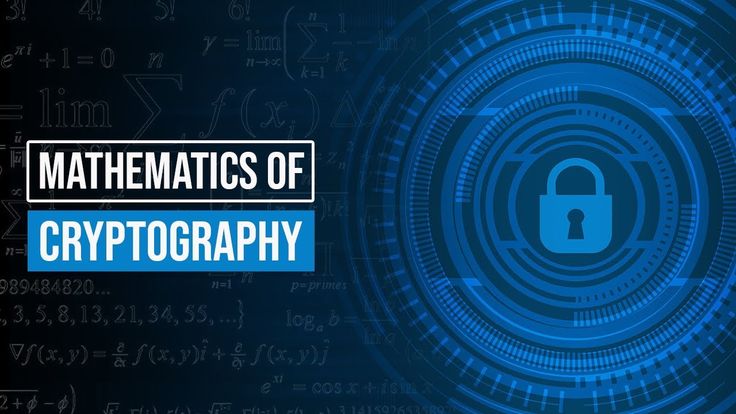In a world increasingly dominated by a digital landscape, the necessity for comprehensive security measures cannot be overstated. The underlying backbone of these safeguards often resides in the intricate domain of cryptography, a field that relies heavily on mathematical principles. Unfortunately, a prevalent sentiment known as mathophobia, or an aversion to mathematics, can inhibit an individual’s ability to appreciate the profound significance of this discipline in the realm of cryptography. However, a thorough understanding of the ways in which mathematics contributes to cryptography can transform this fear into fascination.
Cryptography, the art and science of securing communication and information, utilizes mathematical concepts and algorithms to create secure systems. It establishes the framework for protocols that protect data from unauthorized access and ensure its integrity. The following sections elucidate the various mathematical underpinnings integral to cryptography, providing a comprehensive perspective that counters the stigma surrounding the discipline.
One of the primary mathematical concepts employed in cryptography is number theory. This branch of mathematics revolves around the properties and relationships of whole numbers. Essential to contemporary cryptographic methods are prime numbers—numbers greater than one that have no divisors other than one and themselves. The RSA algorithm, one of the most widely-utilized public-key cryptographic systems, leverages the difficulty of factoring large composite numbers into their prime constituents. The security of RSA hinges on this mathematical challenge, making it practically infeasible for adversaries to reverse-engineer the encryption without possession of the private key.
Beyond number theory, abstract algebra plays a critical role in the construction of cryptographic systems. Groups, rings, and fields—concepts integral to abstract algebra—are foundational in the development of algorithms. For instance, elliptic curve cryptography (ECC) is a prime example of how algebraic structures can enhance security. ECC operates on the algebraic properties of elliptic curves over finite fields, allowing for shorter key lengths while maintaining equivalent security levels compared to traditional methods. The efficiency of ECC makes it particularly advantageous in environments where computational resources are limited.
Further delving into the mathematical toolbox of cryptography reveals the significance of combinatorics and probability theory. Combinatorial principles assist in understanding the complexities associated with key generation and encryption protocols. For example, the sheer number of potential keys available in a symmetric encryption system accentuates the importance of randomness in key generation. Probability theory, on the other hand, aids cryptographers in assessing the vulnerability of systems against various attack vectors. By estimating the likelihood of an adversary successfully breaching a cryptographic system, developers can implement more robust security measures.
Moreover, the interface between mathematics and cryptography extends to linear algebra, particularly in the context of modern cipher algorithms. Block ciphers, such as the Advanced Encryption Standard (AES), utilize linear transformations to manipulate data blocks. Through vector spaces and matrix operations, AES achieves a balance of security and efficiency. The mathematical constructs employed in these algorithms ensure that even minor alterations in the input produce significantly divergent outputs, an essential property known as the avalanche effect.
Another aspect of cryptography that often elicits interest is hash functions, which are essential for ensuring data integrity. Hash functions employ complex algorithms to produce a fixed-size hash value from variable-length input data. The mathematical intricacies involved in designing these functions are paramount as they must meet specific criteria—namely, they should be collision-resistant, meaning it should be computationally infeasible for two distinct inputs to result in the same hash output. The meticulous construction of such functions illustrates the delicate interplay between mathematics and data security.
Moreover, as we grapple with the transitions brought about by advancements in quantum computing, the traditional mathematical foundations of cryptography face unprecedented challenges. Quantum algorithms, such as Shor’s algorithm, threaten to undermine widely-used encryption methods by providing efficient solutions to factoring integers. This burgeoning field highlights the urgent need for mathematically sophisticated post-quantum cryptographic algorithms capable of withstanding quantum adversaries. Research and development of such algorithms hinge upon advanced mathematical concepts, underscoring the ever-evolving relationship between mathematics and cryptography.
In addition to these technical dimensions, education and outreach play a crucial role in addressing mathophobia. Efforts to demystify mathematics and its applications within cryptography can inspire curiosity and engagement. Workshops, interactive seminars, and accessible online courses can equip individuals with essential skills and knowledge, enabling them to appreciate the significance of mathematics beyond traditional frameworks. By fostering a culture of enthusiasm around mathematics, the stigma can gradually dissipate, allowing a new generation of cryptographers to harness its power.
In conclusion, the fear of mathematics should not cloud its essential applications in cryptography. Rather, understanding the rich tapestry of mathematical principles that underpin cryptographic methods can invigorate an appreciation for both fields. As digital communication continues to evolve, the necessity for secure systems remains paramount, and mathematics will undoubtedly remain at the core of this security framework. Embracing the complexity and beauty of mathematics can empower individuals to navigate the challenges of the digital age with confidence and enthusiasm.








Leave a Comment